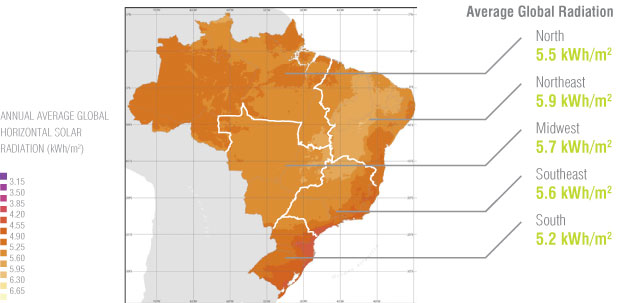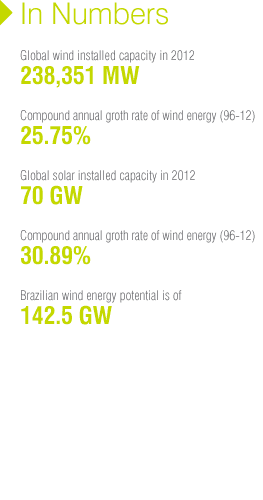Bioenergy
Mercado
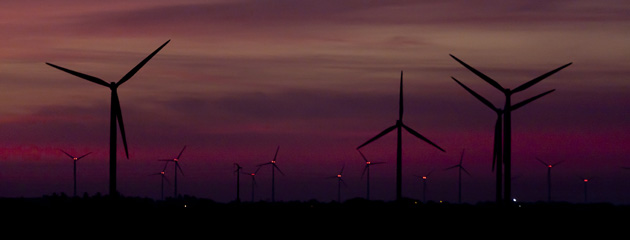
A world that is greatly changing
The demand for energy and the path of human evolution have resulted in the search for new technologies, so that its development can remain in constant sustainable growth, by the implantation of clean renewable energy sources.
With ever more impacting changes in climate and in the environment, the reality of global preservation is not just a discussion of environmentalists anymore, it is now an overcoming of mankind for its very own survival.
The results for this new way of thinking and acting are seen as numbers.
Wind Energy
The global cumulative wind energy installed capacity has been increasing considerably each year exponentially, being the primary source of energy that grows the most in the world. More and more, wind energy is becoming an attractive source of investments because of reduction of implantation costs, government incentives, easier access to financing options and maturing of the technology field.
In 2011, the global installed capacity has reached the level of 238,351 MW, of those 41,236 MW were installed in that year, representing a growth of 20.87% between 2010 and 2011. The average compound annual rate of growth between the years of 1996 and 2011 reach 25.75%.
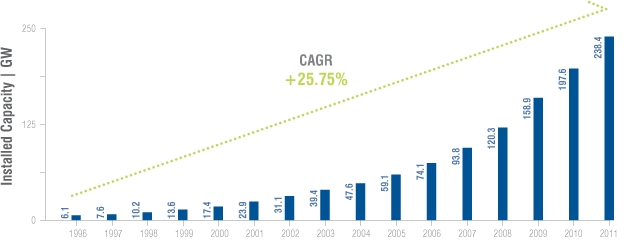
The region analysis also endorses the world need for energy. Being led by China, the wind installed capacity in Asia is over 20 GW, higher than the sum of all the other continents.
Due to the global crisis, markets like Europe and USA had a reduction in their investments, resulting in a slowdown of growth in these locations.
In spite of the low rates of wind investments, Latin America - led by Brazil and Mexico - has been working hard to enable projects, many already being in phase of project and implementing.
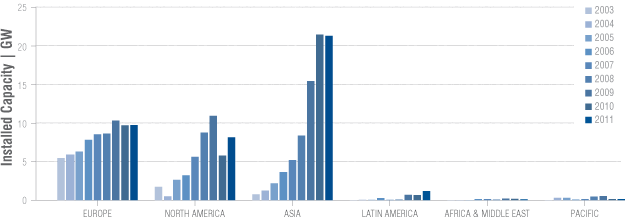
Solar Energy
Despite showing a strong growth in recent years, solar energy is still of little significancy in the global matrix.
Amongst the different generation technologies, photovoltaics is the fastest growing one in the world, where in 2010 alone, 17 GW were installed, totaling 40 GW of cumulative global installed capacity.
This number grew 72% over 2009, with an average growth rate of about 49% between the years of 2005 and 2010.
One of the main reasons of such success are the reduction of cost of manufacturing technology and of its implementation, the incriease in the amount of projects in development, the great interest by investors and development of incentive policies.
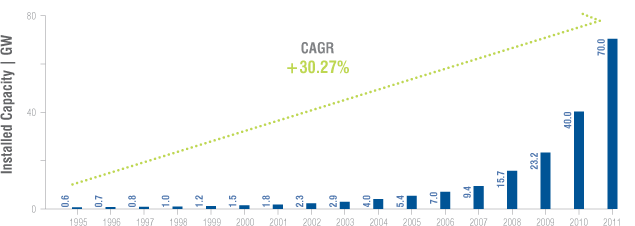
Regarding regional environment, the big highlight is Europe, with 80% of comulative global installed capacity. For the first time in history, Europe has installed more wind power than photovoltaic projects during 2010, led by Germany and Italy.
Compared to other regions with high solar potential, Latin America has low activity in photovoltaic power generation. However the major industrial powers - Brazil and Mexico - have already begun viability projects and also implementation projects to study this kind of energy in their energy matrixes
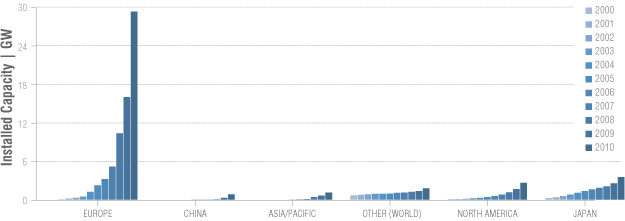
New airs for Brazil
Following world trend in the search for renewable energy forms, Brazil stands out not just as a bet or opportunity anymore, but as a sure investment. On the one hand, Brazil has become a highlight in the international economic scene, attracting new investments at increasing numbers.
On the other hand, the internal market grows and demands energy more and more to sustain its own development. Adding those macro economic features to the fact of it being the owner of one of the highest potentials for wind and solar energy in the world, Brazil gets a strategic and privileged position to execute those projects, thus being extremely attractive for new investments.
Reasons to invest in renewables in Brazil
The characteristics of the renewable market in Brazil atenuate most of the concerns that investors have to face when dealing with this kind of investment, compared with previous experiences in the international market.
Despite not having a definite plan yet for the provision of government subsidies, Brazilian market is already showing major developments on the matter, such as processes of consolidated energy auctions, company pressure on government to increase attractiveness of investments and so on.
Regarding the world market, Brazil presents a scenario of resistance to global crisis, attracting foreign investment and reducing the cost of capital assets with the increase of the suply of power generating equipments, and also for the international recession. In addition to those factors, companies with national reach work with their finantial numbers adjusted for inflation.
The seriousness in the implementation of PPAs in the country stands out for the need to delivery, even if power generation is not implemented. All projects are developed with a long term PPA, unreliable tests being rare.
By the very characteristic of alternative national energetic sources, with a balanced mix of wind energy, Small Hydroelectric Stations and biomass, the price of energy in Brazil is defined by factors other than the volatility of commodity price, which ensures a high scenario competitiveness and possibilities for higher investment returns.
Wind Energy in Brazil
Brazil has an enormous wind potential to be exploited. Although it is one of the cleanest and most competitive electricity productions, its participation in the national matrix is still very small, losing place to other investments. With an installed capacity of only 1,500 MW in 2012, the country has the potential of 132.5 GW, a figure compatible to the remaining hydropower potential, with 182 GW.
Visualizing the future, the investments in wind power in Brazil in 2011 account for 50% of Latin America, which makes it one of the most attractive countries to invest in the sector.
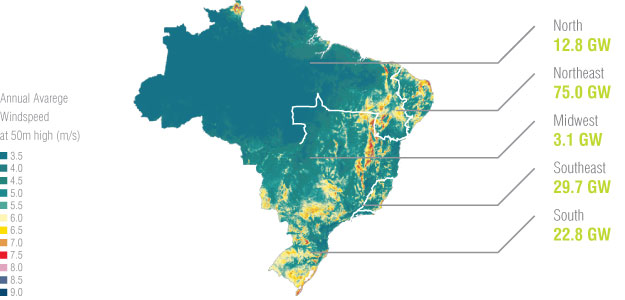
Solar Energy in Brazil
Following the global trend, solar power generation in Brazil is beginning to take its first steps, with an installed capacity of only 20 MW. However, as it is one of the most promising energy sources to the new global reality, it has been becoming viable specially for its reduction of cost for the production of the technology.
Led by the Brazilian Northeast region, the high potential of solar power generation is part of an aspect that is mainly unexplored, with an enormous space to be conquered, attracting pioneer investments that are highly attractive.
